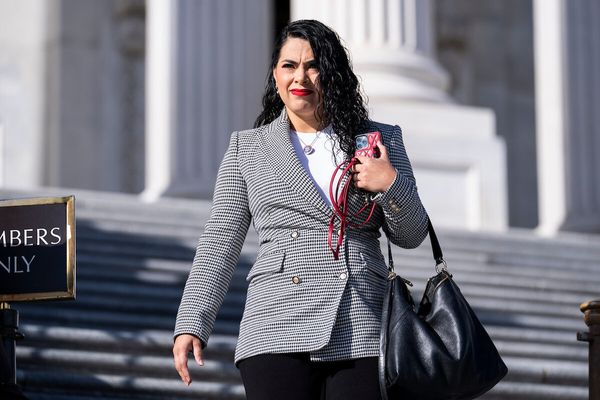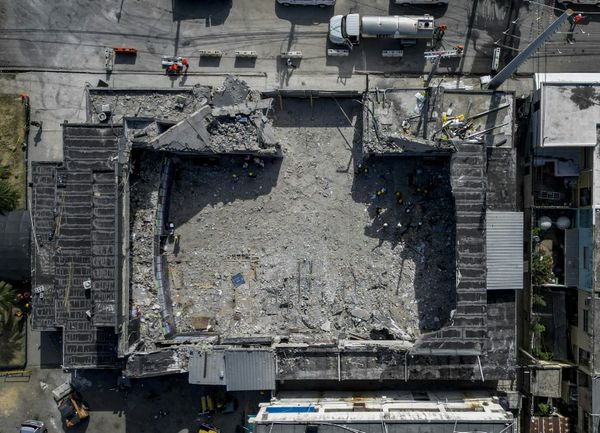
A faulty radio antenna contributed to a mid-air crash between two helicopters which killed a British couple on Australia’s Gold Coast in 2023, authorities have said.
Diane, 57, and Ron Hughes, 65, from Neston, Cheshire, died in the collision at about 2pm local time – 4am GMT – on January 2 in Main Beach, not far from Sea World in the state of Queensland.
The incident occurred when one helicopter was taking off and the other was landing.
One of the helicopters was able to safely land on the sandbank, with five of its six passengers suffering only minor injuries.
But the other helicopter crashed, killing four of those inside and leaving a further three critically injured.
A final report into the incident from the Australian Transport Safety Bureau (ATSB), released on Wednesday, uncovered a series of safety issues which it said contributed to the incident.
It determined the radio system in the helicopter which was taking off had “defects that limited transmission range”.
The report said: “The pilot of the inbound helicopter had earlier sighted the departing helicopter on the park pad, but had assessed it as not being a threat, and expected to be alerted by a ‘taxiing’ radio call if that condition changed, which would then be their cue to arrange separation.”
ATSB chief commissioner Angus Mitchell said the investigation “found faults in the radio antenna of the departing helicopter which likely prevented broadcast of the taxi call”.
He said: “Without the taxiing call being received, the pilot of the inbound helicopter, who was likely focusing on their landing site, had no trigger to reassess the status of the departing helicopter as a collision risk.”
The report also found both pilots’ view of the other helicopter was limited in the lead-up to the accident.
Mr Mitchell said: “This limited visibility combined with both pilots’ competing priorities and understanding the airspace was clear led to the mid-air collision as both helicopters passed through the conflict point created by the introduction of a second helipad nine months earlier.
“While the operator did have in place a system of radio calls, hand signals and visibility devices that was intended to alert pilots of the presence of another helicopter, the investigation found that system to have significant flaws.”
The report also focused on occupant survivability, with the report determining passengers’ seatbelts were incorrectly fitted due to the interaction of their lifejackets with their seatbelts.
“While the ATSB was unable to determine to what extent the incorrectly fitted seatbelts contributed to the passengers’ injuries, we know that correctly fitted restraints improve survivability for passengers in the event of collisions,” Mr Mitchell said.
The report says operator Sea World Helicopters “has taken a number of safety actions in response to the accident”, but flagged there were four “remaining safety issues”.
Mr Mitchell said: “These recommendations include formal consideration of the design of conflict points to identify opportunities for further risk controls or their elimination; developing objectives within its safety management system to focus on aviation safety risk; improving change management processes; and clarifying its change management procedure to capture the introduction of additional helicopters.”
In a statement, Sea World Helicopters said it would “respond within the allocated timeframe”, adding it remained “committed to consistently evolving our safety measures”.
The statement said: “Our company maintains robust safety systems, dedicated support staff and rigorous oversight protocols to uphold the highest standards of aviation safety.”
In a statement carried by the Australian Broadcasting Corporation, Mrs Hughes’s children, Lewis Ainsworth and Sian Long, said they were “deeply saddened and heartbroken”.
“We are grateful for the thorough and professional work the ATSB has done in investigating this incident,” the statement said.
They also thanked investigators for bringing “some clarity and understanding to what happened that fateful day”, but said the way Sea World Helicopters had handled the incident was “nothing short of disappointing”.
“The way they have handled this tragedy reflects poorly on them and it’s hard to reconcile their actions with the profound impact this has had on so many lives,” they said.







